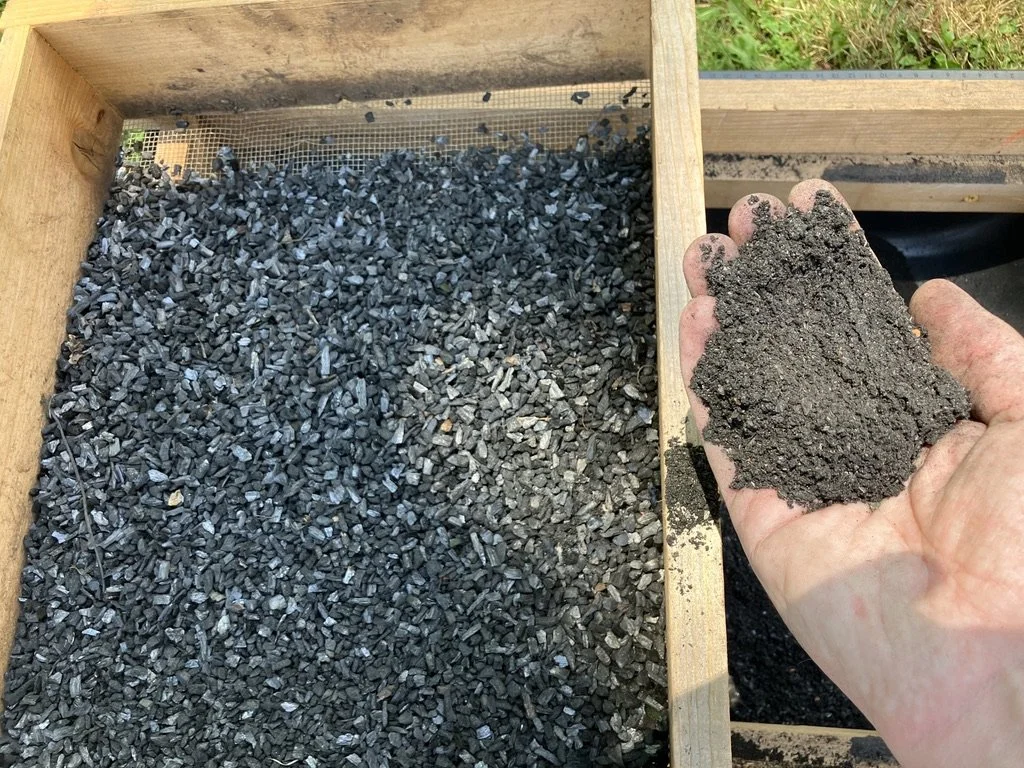Crushin’ Biochar
So I’ve had ~10 gallons of biochar sitting around for the last few weeks but hadn’t got around to crushing it down. With a couple hours of free time today I decided that it was time to test out a really cheap and easy method. Without ready access to a hammer mill I needed to figure something out. Solution?
Super high-tech way to crush biochar!
Yup. An empty feedbag, a piece of scrap plywood, and a truck. Easy enough. Surprisingly(?) it actually worked quite well. It some back and forth, and with a greater volume this method would probably become too tiresome. (see what I did there?) However, for the amounts I have and will be making in the near-term, this method ought to work just fine. If I do end up with a greater volume I’ll just have to bug my colleagues to use the hammer mill at the NEXUS facility.
Simply crushing the biochar wasn’t the end of it however, that merely made some smaller pieces. For the purpose of consistency (and to appease my OCD) I then ran all of the biochar through two screens. The first at 1/4” and the second at 1/8”. Thankfully, I made a handy-dandy mobile sifter for sifting out worms from vermicompost which worked perfectly with the biochar as well! I’ll post the plans someday for the sifter, it sure ain’t anything fancy, but I’ve found it to be incredibly useful when dealing with smaller amounts of material.
Like panning for gold!
In the end it made for a pretty nice product:
1/8” - 1/4” on the left, < 1/8” on the right.
I’ll cover the process of making biochar in another post. That said, I’m by no means an expert on biochar, not even close, in fact I’m just starting to get into it and what I’ve learned has been from students in the ST undergrad and grad programs, who frankly know a heck of a lot more than I. In another post I’ll also cover some of the “whys,” but sneak preview: it’s an absolutely incredible material due to it’s porous nature and massive surface area, which translates to lots of nooks and crannies for microbes to form colonies; in addition, it sequesters carbon for hundreds to thousands of years. Fighting climate change with fire whilst improving soil fertility. That’s more than enough reason to keep making it in my book.
Until next time. Keep it mellow, fellow mesophiles!
